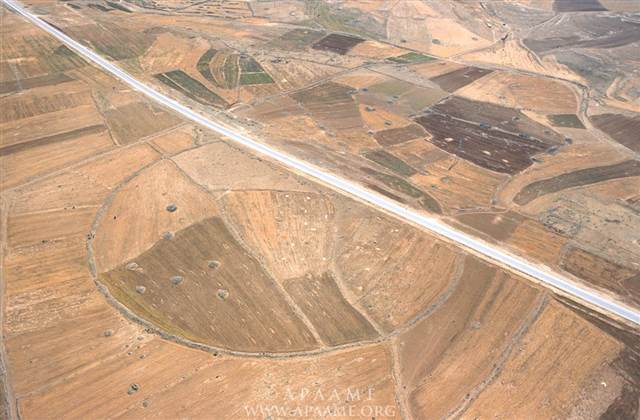World News – Huge stone circles in the Middle East have been imaged from above, revealing details of structures that have been shrouded in mystery for decades.
 Archaeologists in Jordan have taken high-resolution aerial images of 11 ancient “Big Circles,” all but one of which are around 400 meters (1,312 feet) in diameter. Why they are so similar is unknown, but the similarity seems “too close to be a coincidence,” said researcher David Kennedy.
Archaeologists in Jordan have taken high-resolution aerial images of 11 ancient “Big Circles,” all but one of which are around 400 meters (1,312 feet) in diameter. Why they are so similar is unknown, but the similarity seems “too close to be a coincidence,” said researcher David Kennedy.
The Big Circles were built with low stone walls that are no more than a few feet high. The circles originally contained no openings, and people would have had to hop over the walls in order to get inside.
Archaeologists are unsure when these structures were built. Analysis of the photographs, as well as artifacts found on the ground, suggest the circles date back at least 2,000 years, but they may be much older. They could even have been constructed in prehistoric times, before writing was invented, scientists say.
Though the Big Circles were first spotted by aircraft in the 1920s, little research has focused on these structures. The new aerial images may help change that situation.
The “most important contribution is simply to collect and make known a large group of rather remarkable sites,” Kennedy, a professor at the University of Western Australia, wrote in an article published recently in the journal Zeitschrift für Orient Archäologie.
Kennedy has been leading the Aerial Archaeology in Jordan Project since 1997 and also co-directs the Aerial Photographic Archive for Archaeology in the Middle East.
The circles would not have been hard to build, Kennedy said. They were constructed mainly with local rocks, and a dozen people working hard could potentially complete a Big Circle in a week, Kennedy told LiveScience in an email. [Gallery: Aerial Photos Reveal Mysterious Stone Structures]
However, building the circles in a precise shape would have taken some planning. That feat “would have required at least one person as ‘architect,'” Kennedy said.
This is a condensed version of a report from LiveScience. Read the full report.
